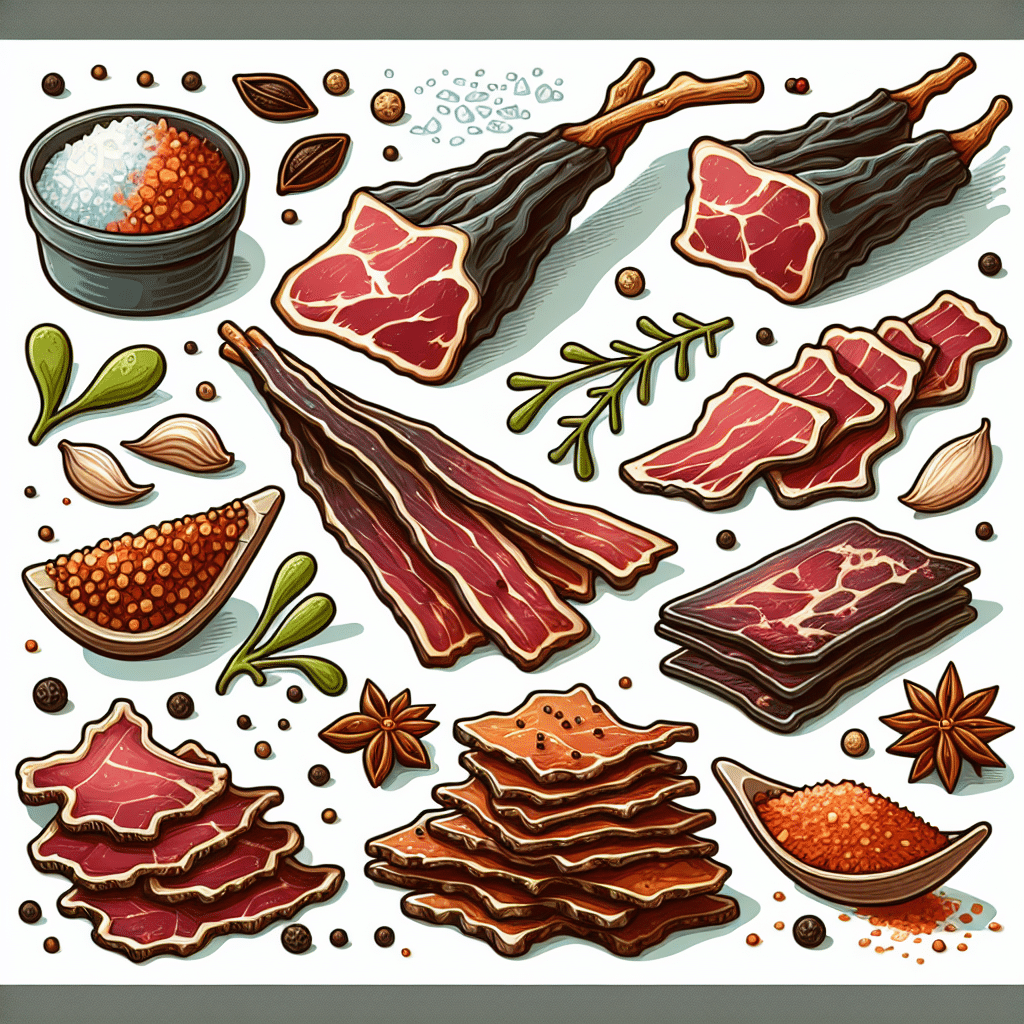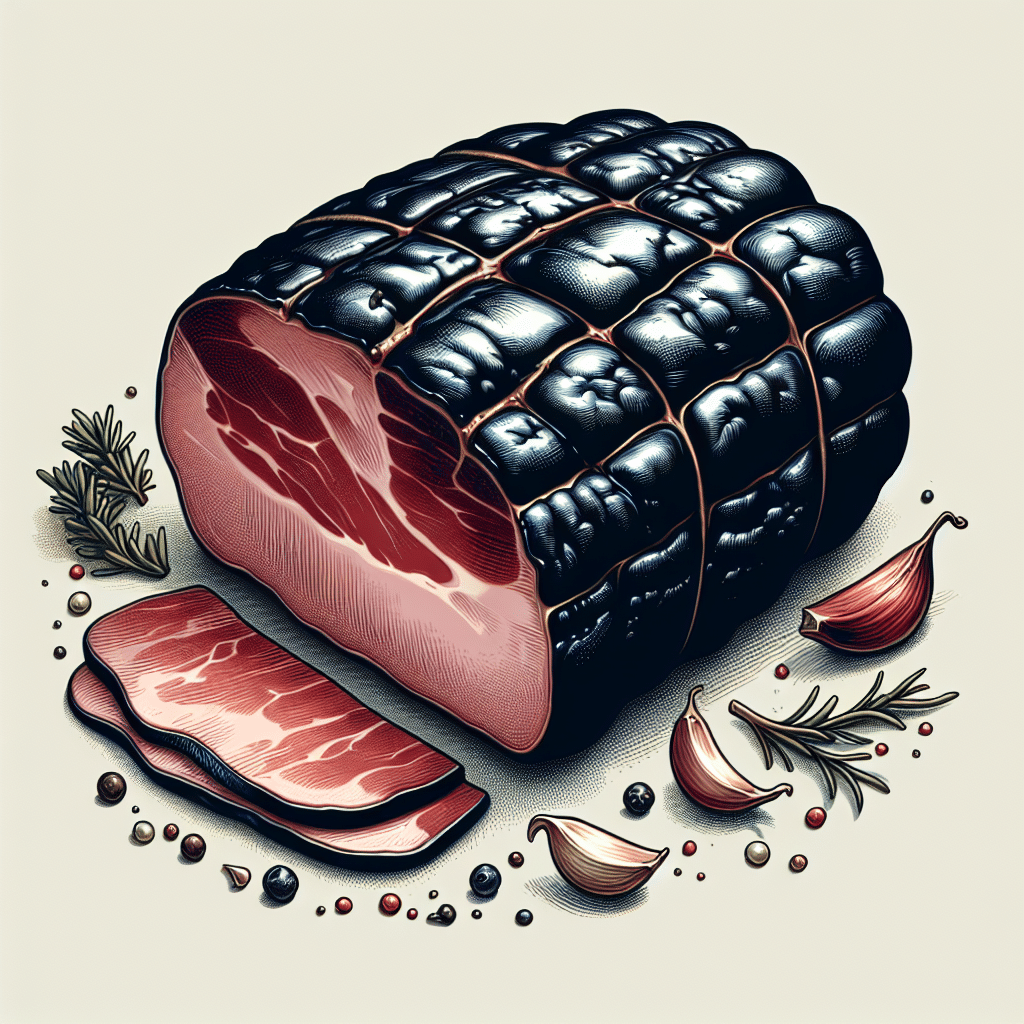Biltong is a traditional South African dried meat snack, often considered a healthier alternative to jerky. Made from various cuts of meat, primarily beef, biltong undergoes a meticulous curing process involving salting, seasoning, and air-drying. The process enhances the meat’s flavor while preserving it without the need for refrigeration.
Typically spiced with vinegar, coriander, pepper, and other seasonings, biltong can be enjoyed in strips, chunks, or even ground as a seasoning. Its rich taste and chewy texture have made it a popular snack in many countries outside South Africa, particularly as a protein-rich option for those on low-carb or keto diets. Biltong is not only a flavorful treat but also embodies a cultural culinary tradition that reflects South Africa’s history and diverse cuisine.
Introduction to Biltong
As a cornerstone of South African cuisine, biltong is often compared to beef jerky, yet it has unique features that set it apart. While both are dried meats, the methods of preparation, texture, and flavor contribute to biltong’s distinct identity. Understanding what biltong is entails not only a look at its ingredients and preparation techniques but also an exploration of its cultural significance and health benefits. This comprehensive guide will delve into each aspect of biltong, from its origins to modern-day variations, providing insights that will enhance your appreciation of this beloved snack.
What is Biltong Made Of?
Biltong can be made from a variety of meats, with beef being the most common. Other proteins such as game (venison, ostrich), chicken, and even fish can also be used. The primary ingredients in traditional biltong preparation include:
- Meat: The choice of meat significantly affects the flavor; lean cuts are preferred for lower fat content.
- Vinegar: Commonly malt vinegar, it helps tenderize the meat while adding acidity.
- Spices: Coriander, black pepper, and salt are standard, although variations may include chili powder, garlic, or other spices.
The Biltong Preparation Process
The biltong-making process is intricate and involves several key steps:
1. Selection of Meat
The process begins with selecting high-quality cuts of meat. Preferred cuts for biltong include silverside, topside, or other lean pieces that yield a chewy texture.
2. Cutting
The meat is often cut into strips or chunks, generally about 1-2 inches thick, which allows for efficient seasoning and drying.
3. Marinating and Seasoning
Once cut, the meat is marinated in vinegar and then coated with a mixture of salt, crushed coriander seeds, and any additional spices desired. This step not only flavors the meat but also acts as a preservative.
4. Curing
The seasoned meat is allowed to cure for a period ranging from a few hours to several days, depending on desired taste intensity.
5. Air Drying
After curing, the meat is hung in a cool, dry place with adequate airflow. Traditionally, this would have been in a shaded area, but modern biltong makers often use dehydrators to control the drying process better and ensure quality.
Flavor Profiles of Biltong
The flavor of biltong varies greatly based on the chosen ingredients and preparation techniques. Common flavor notes include:
- Savory: The robust nature of the meat combined with spices creates a rich, savory experience.
- Spiced: Depending on the herbs and spices used, biltong can range from mild to spicy, catering to diverse palates.
- Tender vs. Chewy: The drying duration determines the texture; shorter drying times yield a more tender product, while longer times create a chewier bite.
Health Benefits of Biltong
Biltong is celebrated not only for its taste but also for its health benefits:
- High in Protein: Biltong is an excellent source of protein, making it a preferred snack for athletes and health-conscious individuals.
- Low in Carbs: With minimal carbohydrates, biltong fits well into low-carb and ketogenic diets.
- No Added Sugars: Unlike many commercial snacks, biltong is free from added sugars, helping to maintain stable blood sugar levels.
Cultural Significance of Biltong
Biltong holds a significant place in South African culture, often enjoyed during social gatherings, sporting events, or as a quick snack on outdoor adventures. Its origins can be traced back to the need for preserving meat before the advent of refrigeration, making it an integral part of South Africa’s culinary heritage. Today, biltong has found markets across the globe, including the United States, where it is appreciated both as a delicacy and a protein-rich snack option.
How to Enjoy Biltong
Biltong is versatile and can be enjoyed in various ways:
- As a snack: Enjoy it straight from the package for an on-the-go protein boost.
- In salads: Add biltong pieces to salads for a flavorful twist and additional protein.
- In sandwiches or wraps: Use biltong as a filling for a hearty sandwich or wrap.
- With cheese and wine: Pair biltong with artisanal cheese and wine for an elevated snacking experience.
Where to Purchase Biltong
Biltong is widely available in specialty food stores, international markets, and online retailers. Look for brands that emphasize quality ingredients, traditional preparation methods, and natural seasoning. Additionally, local butcher shops may also offer homemade versions, providing a unique experience.
Frequently Asked Questions
1. Is biltong gluten-free?
Yes, traditional biltong is gluten-free as it only contains meat and natural spices. However, always check labels for any added ingredients.
2. How long does biltong last?
Properly stored biltong can last several months without refrigeration if kept in a cool, dry place. Once opened, it is best enjoyed within a few weeks for optimal freshness.
3. How is biltong different from jerky?
Biltong is air-dried and marinated in vinegar and spices, whereas jerky is typically cooked and often contains added sugars. Biltong often retains more moisture and has a chewier texture compared to jerky.
4. Can I make biltong at home?
Yes! Making biltong at home is entirely feasible with the right ingredients and equipment. Basic steps involve marinating the meat, seasoning it, and air-drying in a suitable location.
5. Is biltong safe for those on a diet?
Biltong is generally safe for most diets due to its high protein content and low carbohydrate levels, making it an ideal option for those following low-carb or ketogenic diets.
Conclusion
In summary, biltong is a unique and flavorful snack with a rich heritage that offers numerous health benefits. Whether you are a longtime fan or a newcomer, understanding its essence allows for a deeper appreciation of this South African delicacy. Embrace the adventure of tasting authentic biltong and explore its countless culinary possibilities.


